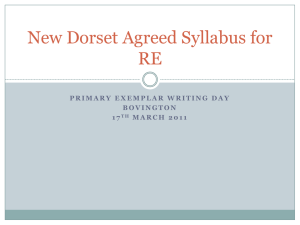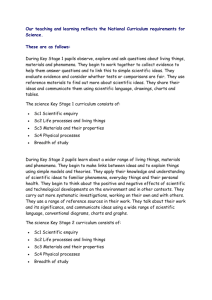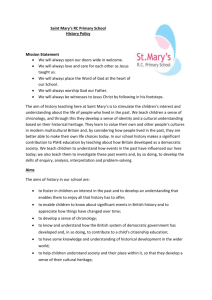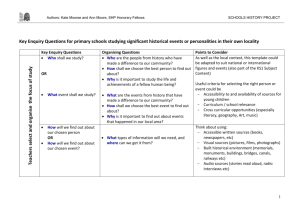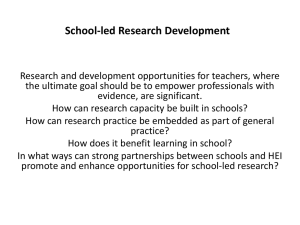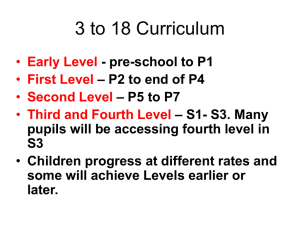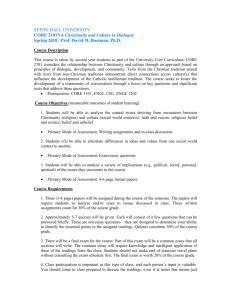Presenters` Script
advertisement
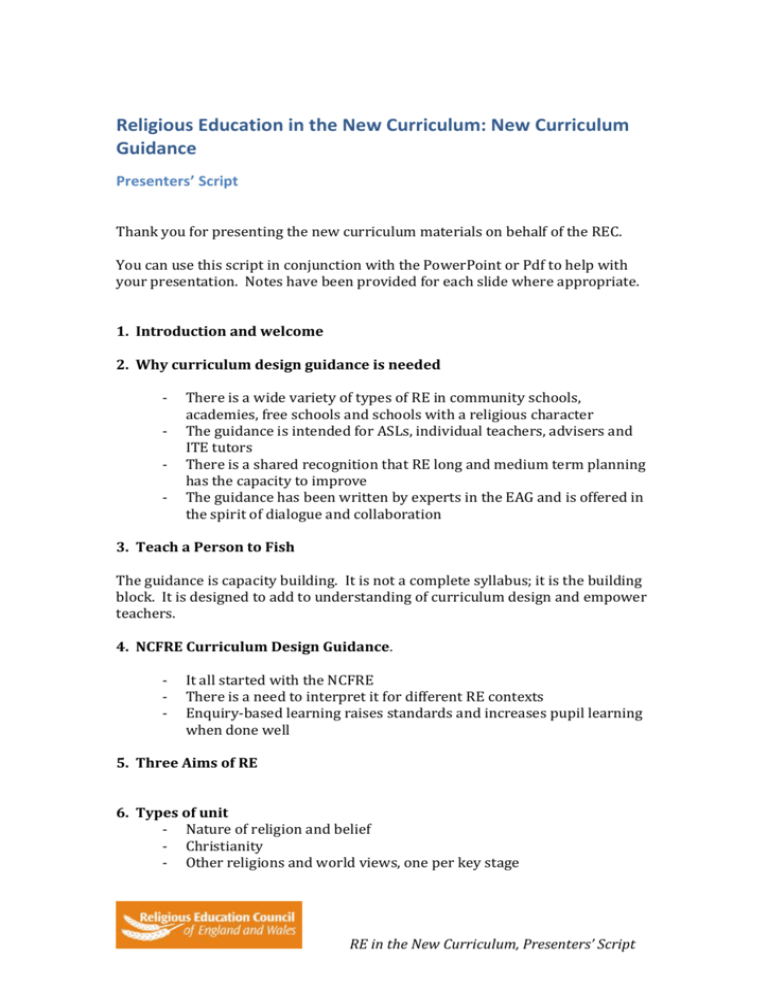
Religious Education in the New Curriculum: New Curriculum Guidance Presenters’ Script Thank you for presenting the new curriculum materials on behalf of the REC. You can use this script in conjunction with the PowerPoint or Pdf to help with your presentation. Notes have been provided for each slide where appropriate. 1. Introduction and welcome 2. Why curriculum design guidance is needed - There is a wide variety of types of RE in community schools, academies, free schools and schools with a religious character The guidance is intended for ASLs, individual teachers, advisers and ITE tutors There is a shared recognition that RE long and medium term planning has the capacity to improve The guidance has been written by experts in the EAG and is offered in the spirit of dialogue and collaboration 3. Teach a Person to Fish The guidance is capacity building. It is not a complete syllabus; it is the building block. It is designed to add to understanding of curriculum design and empower teachers. 4. NCFRE Curriculum Design Guidance. - It all started with the NCFRE There is a need to interpret it for different RE contexts Enquiry-based learning raises standards and increases pupil learning when done well 5. Three Aims of RE 6. Types of unit - Nature of religion and belief - Christianity - Other religions and world views, one per key stage RE in the New Curriculum, Presenters’ Script 7. Design Principles - Clarity of purpose - Ensure balance - Build in progression 8. EYFS - Understanding the world Stories, poems, prayers and songs Festivals and celebrations Artefacts, places of worship and visits Videos Ideas and questions 9. KS1 - Nature of Religion and Belief Christianity At least one other religion or world view Depth/ breadth – fewer things can lead to greater depth 10. KS2 - Value of religion and belief Christianity At least two other religions or world views Depth/ breadth – fewer things can lead to greater depth 11. KS3 - Nature of religion and belief Christianity At least one other religion or world view Depth/ breadth – fewer things can lead to greater depth 12. Enquiry – Framing units as enquiry questions - Why it matters to get it right Enquiry is not always done well RE in the New Curriculum, Presenters’ Script 13. Accessibility of question - Focus on object of study Big, longstanding questions Sequences for progression Core beliefs and practices Extract from the Guidance: This guidance uses key questions as the main way of framing units of work. Such an approach is useful in encouraging an enquiry-based approach to learning. It is not, however, the only way of framing units of work and should not be seen as a required template. If a school decides to use enquiry questions as the title for units, the following points may be helpful. ▪ The title questions need to be clearly accessible for the age of the pupils, enabling them to join in the process of deciding what the question means and how it might be investigated. ▪ Each question should focus simply on the object of study, avoiding unnecessary complexity. ▪ They should be ‘big’ questions that take the pupils to the heart of the subject and are of long standing significance. ▪ Sequences of questions should enable pupils to see a learning journey and identify how any topic is building on previous learning by advancing their progress in the subject. Questions should be rooted in the core beliefs and commitments of the main religion(s) or worldview(s) being studied. 14. Changes? – What’s new? - Focus on knowledge, understanding and wisdom Importance of religious and philosophical literacy Focus on design Flexibility of contexts Fewer things, greater depth Beyond levels 15. What’s the same? - Partnership of RE professionals 16. Watch this space – What’s next? - Guidance on assessment and progression beyond levels RE in the New Curriculum, Presenters’ Script
